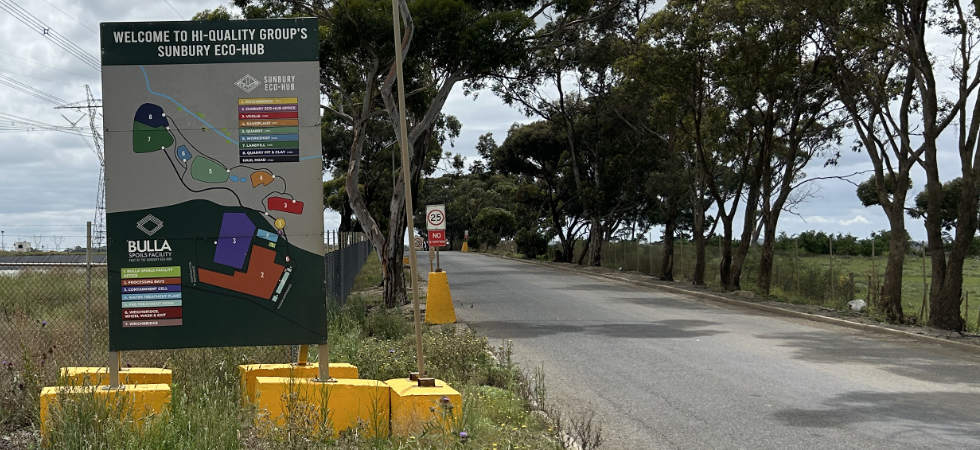Hi-Quality, the firm with plans to expand its waste management operation in Bulla, is waiting to hear what its next step will be.
The company, which is well known to the Environmental Protection Agency, wants to burn rubbish to generate electricity via steam-powered turbines, treat contaminated soil, expand its quarry operation, and continue running its spoils facility beyond a pre-agreed shut-down time of this year to 2048.
Its plans will need permission from numerous government agencies including the EPA, Department of Transport and Planning, and Hume City Council (although any decision the council makes can be changed by the State Government).
One of the questions during its online public consultation sessions was how many days its proposed waste-to-energy incinerators will operate each year. The answer in its published report is 8,000 hours – or 333 full days.
The firm also confirmed the height of its proposed chimney (stack) at 60m tall, saying it will be placed 700m back from Sunbury Rd. However, the final height will be determined by the EPA. The flue gas treatment system will use fabric filters to separate particles from the incinerator’s emissions, the boiler will operate at > 850-degrees C.
Air quality
As part of its air quality impact assessment, modelling is being undertaken by the firm to understand where emissions from the facility would drift to, as well as the expected air quality at ground-level. The modelling assesses a 10km by 10km radius, in accordance with EPA guidelines. The closet EPA air quality monitoring site to Bulla is 32km away in Alphington.
“A detailed human health risk assessment will be conducted to determine the associated risk,” states the firm in its report. “Air quality will be continually monitored to ensure emissions are safe for the surrounding areas.”
Buffer zone
Victoria’s waste-to-energy framework doesn’t currently require any buffer zones around facilities such as those proposed by Hi-Quality. However, the firm has a 1.3km buffer as a result of its existing operations. The closest new housing development to the site is Maplestone.
“Hi-Quality understands that the developer [of Maplestone] is aware of this buffer and that the houses are currently being developed outside of the buffer area,” states Hi-Quality.
Life of the proposed 30MW energy-from-waste plant is 30 years, states the firm, and about 10% of its power would be used by the plant and other facilities on the firm’s 261 hectare site. The plant would handle 300,000 tons of waste a year.
“Modelling shows that councils within 45 minutes travel time to the site have more than 350,000 tonnes a year of municipal solids waste available, and there are more than 700,000 tonnes a year of municipal solid waste within an hour and a half travel distance,” states Hi-Quality.
The company has also been in discussions with councils from Bendigo to Melbourne about taking their rubbish, and is submitting proposals for energy-from-waste facilities in NSW.
Additional truck movements
Modelling for the proposed energy, recycling, and resource recovery activities at Bulla estimates 800 additional truck movements a day by 2030.
Before a decision is made, the EPA will publish the firm’s application as part of a public exhibition. This will take place later this year, or early 2025, says Hi-Quality.
If this facility is approved, it would be funded through a private consortium or joint venture, which would include Hi-Quality and other parties.
“Our site is also earmarked for future commercial and industrial land in the Sunbury South PSP, and we have a master plan for the site that aligns to Hume City Council’s vision for the area,” states Hi-Quality.
In 2021, the council developed a waste and resource recovery strategy to help it meet state-wide legislative targets, including reaching 80% diversion from landfill by 2030.
Meanwhile, the EPA has paused its assessment of an application by Hi-Quality to process fill material and construction waste for reuse at its Bulla site. The proposed activity will involve handling up to 100,000 tonnes of fill material and construction wastes a year.
In addition, mechanical equipment would be needed to sort and screen incoming material. Material will be separated into soil fill material and construction material.
Additional reading: See the ABC’s report on opposition to waste-to-energy schemes here.


